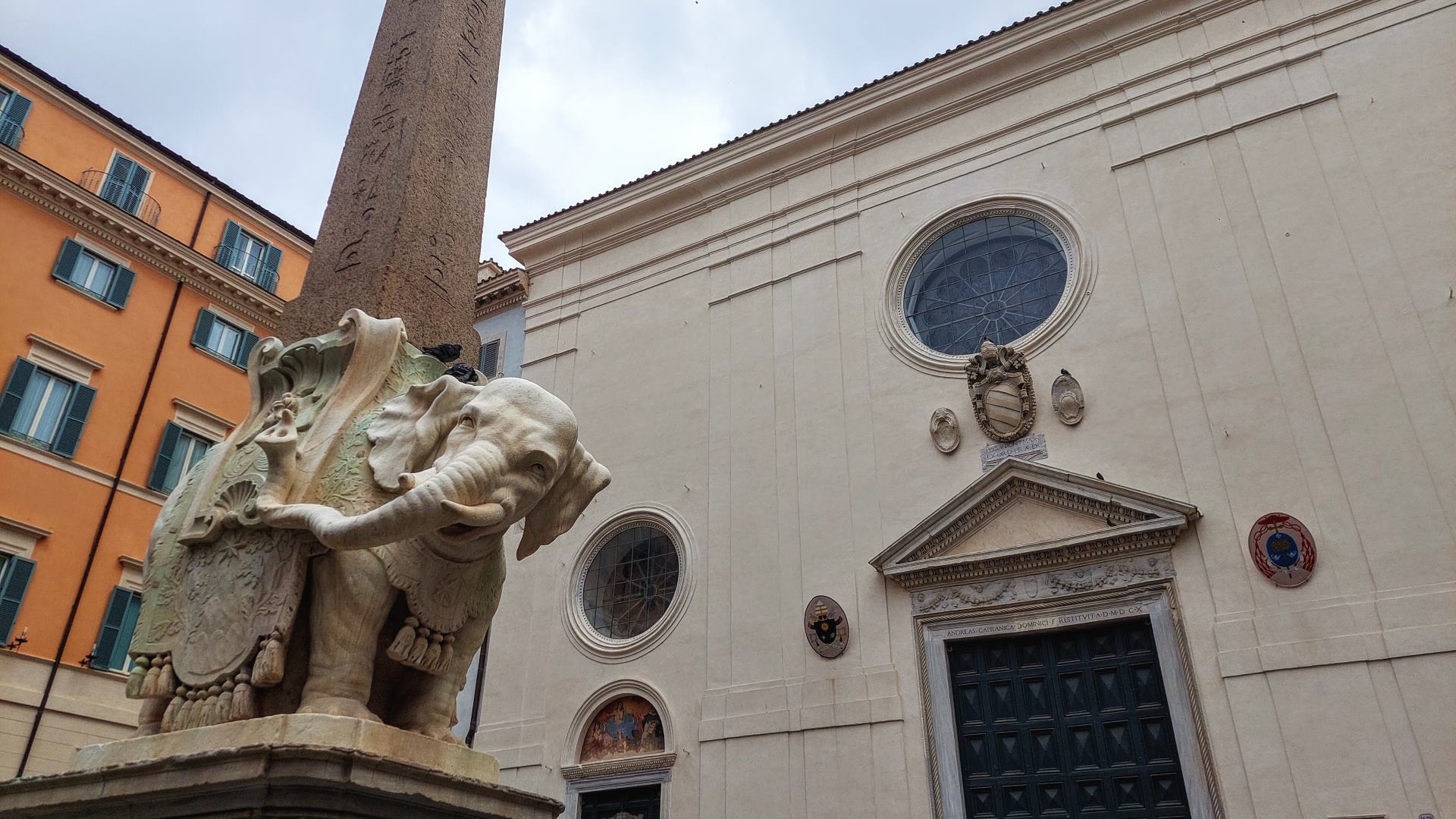
Eine Stadt besteht nicht nur aus Denkmälern, Palästen und Kirchen, sondern auch aus der Reflexion ihrer Geschichten und des Lebens, das sie durchläuft. Das Leben der Römer war seit jeher von Ritualen, Festen, Jahrestagen und Feiern geprägt: ein dichter Kalender mit festen Terminen, die mit ihrer Fülle an Traditionen eine Gelegenheit zur religiösen und zivilen Besinnung, zur Begegnung, zum Austausch und zum Vergnügen boten, Saison für Saison.
Einige dieser Ereignisse haben dem Zahn der Zeit nicht standgehalten oder haben etwas von dem Gefühl des vollkommenen Staunens verloren, das sie den Römern und den zahlreichen Besuchern der Stadt zu vermitteln wussten. Andere hingegen erfreuen sich nach wie vor bester Gesundheit und wurden sogar mit neuen Elementen angereichert. Und wieder andere, obwohl sie erst in jüngerer Zeit entstanden sind, gehören heute zu den modernen und zeitgenössischen „Traditionen“ der Stadt.
Um Rom vollständig zu erleben und sich als Teil seiner Geschichte zu fühlen, erzählen wir Ihnen Monat für Monat von einigen besonderen Tagen und Momenten der Stadt, von heute und von gestern: es sind die am meisten herbeigesehnten oder erwarteten Termine oder auch einfach nur die kuriosesten.
-
Karneval, 27. Februar - 4. März
-
Das Navigium Isidis, das Schiff der Isis, 5. März
-
Heilige Franziska von Rom, 9. März
-
Das Wunder des heiligen Philipp Neri, 16. März
-
Der heilige Josef und die Windbeutel, 19. März
-
Das Massaker von Fosse Ardeatine, 24. März
-
Die Verkündigung und die „Jungfernprozession“, 25. März
Karneval, 27. Februar - 4. März (bewegliches Fest zwischen Februar und März)
Eine Handvoll Tage voller Streiche, Regelverstöße, Maskeraden und ungezügelter Freude gehen dem Beginn der Fastenzeit und den vierzig Tagen der Buße und Reinigung in Erwartung von Ostern voraus. Obwohl seine Ursprünge auf die heidnischen Feste des klassischen Griechenlands und des alten Roms zurückgehen, ist der Karneval im Wesentlichen ein Fest, das mit der katholischen und christlichen Welt verbunden ist. Und es war ein Papst, der Rom in der zweiten Hälfte des 15. Jahrhunderts in die Welthauptstadt des sorglosen Wahnsinns verwandelte. Nachdem er die päpstliche Residenz in den von ihm errichteten Palast an der Piazza Venezia verlegt hatte, konzentrierte Paul II. den Großteil der Karnevalsfeiern, die bis dahin im Testaccio-Gebiet stattgefunden hatten, im historischen Zentrum und insbesondere in der Via Lata (der heutigen Via del Corso). Mit seinen Maskenumzügen, Festwagen, Turnieren und Wettkämpfen, den mit Spannung erwarteten Berberpferderennen und dem Festa dei Moccoletti bezog der römische Karneval die gesamte Bevölkerung ein und zog Künstler, Dichter, Wanderer und Neugierige aus der ganzen Welt an. Als die weltliche Macht der Päpste schwand, überzeugten die zahlreichen Zwischenfälle, die sich zwischen Zuschauern und Teilnehmern ereigneten, die Savoyer davon, dem rücksichtslosen und hemmungslosen Treiben Einhalt zu gebieten. Der fröhlich-subversive Geist des Karnevals ist jedoch nicht gänzlich erloschen, und noch heute färbt sich die Stadt mit Masken und Konfetti, verkleidet sich für das Fest und bietet Veranstaltungen für Kinder und Erwachsene in kulturellen Einrichtungen und städtischen Räumen.
Das Navigium Isidis, das Schiff der Isis, 5. März
Als Kreuzungspunkt von Völkern und Kulturen nahm Rom stets bereitwillig neue Götter und Kulte auf – vorausgesetzt natürlich, dass sie keine Exklusivität beanspruchten und ihren Platz kannten. Ganz oben auf der Top-Ten-Liste der importierten fremden Gottheiten stand jahrhundertelang Isis, die ägyptische Großmuttergöttin, die bereits im 1. Jahrhundert v. Chr. nach der Eroberung Ägyptens nach Rom kam und nur kurzzeitig von Augustus und Tiberius bekämpft wurde. Ihr prächtigster Tempel, das Iseum Campense, befand sich im Herzen des Campus Martius, gleich hinter dem Pantheon, und Spuren davon sind noch hier und da zu sehen, z. B. Obelisken (Macuteo, Minerveo...) und Fragmente von Statuen, wie dem Piè di Marmo und der Büste von Madama Lucrezia. In den weiten Grenzen des Römischen Reiches hielt sich der Isis-Kult bis weit über das 4. Jahrhundert hinaus, ebenso wie die festlichen und farbenfrohen Feierlichkeiten, bei denen die Geschichte der Göttin nachgespielt wurde, die ihren Gatten Osiris wiedererweckt hatte, nachdem man seine zerstückelten Körperteile im Meer gefunden hatte. Vor einem Umzug maskierter Gruppen, die als Soldaten, Richter, Gladiatoren und Philosophen verkleidet waren, wurde die Statue der Göttin in Rom in einer Prozession zum Hafen von Ostia getragen, begleitet von weiß gekleideten Frauen. Dort füllten die Gläubigen ein rituelles Boot mit Geschenken und Votivgaben und ließen es aufs Meer hinausfahren, bis es am Horizont verschwand, als Gebet für die Sicherheit der Seeleute und aller ihrer Verehrer im Meer des Lebens. Das Datum, an dem das Navigium Isidis stattfand, markiert die Wiederaufnahme der Schifffahrtssaison, die in den Wintermonaten unterbrochen worden war. Einige Gelehrte sind der Meinung, dass die christliche Tradition des Karnevals auf den tanzenden, maskierten Umzug der Isis und den „Carrus navalis“ (ein Boot auf Rädern, auf dem die Statue der Göttin angebracht war) zurückzuführen ist.
Heilige Franziska von Rom, 9. März
Sie ist die römischste aller Heiligen: Francesca Bussa de’ Leoni (Ceccolella) wurde Ende des 14. Jahrhunderts nur wenige Schritte von der Piazza Navona entfernt in einer reichen und adligen Familie geboren. Sie wurde sehr jung in die Ehe mit dem ebenso reichen und adligen Lorenzo de’ Ponziani gezwungen und verwandelte das Haus ihres Mannes in Trastevere zusammen mit ihrer Schwägerin Vannozza in eine Anlaufstelle für Kranke und Arme in einem von Kämpfen, Hungersnöten und Seuchen verwundeten Rom. Trotz ihrer Heirat und Mutterschaft legte sie 1425 zusammen mit anderen jungen Frauen vor den Olivetanern des Klosters Santa Maria Nova ein Opfergelübde ab, und zwar in der Kirche, die später im Volksmund nach ihr benannt wurde und in der sie heute noch ruht. Nach dem Tod ihres Mannes schloss sie sich 1436 ihren Schwestern im Kloster Tor de’ Specchi an, das am Fuße des Kapitols und neben dem Marcellus-Theater liegt, und übernahm dessen Leitung. Als Expertin in der Heilung mit Kräutern und Abkochungen sowie als geschickte Hebamme starb Francesca vier Jahre später, am 9. März. Die ganze Stadt strömte herbei, um ihren Leichnam zu verehren, und Rom betrachtete sie sofort als Heilige, obwohl der Prozess der Heiligsprechung bis 1608 warten musste. Ihr Leben und ihre Wunder sind in den Fresken des Oblatenklosters aus dem 15. Jahrhundert dargestellt, das jedes Jahr am 9. März seine Pforten für die Öffentlichkeit öffnet, wenn die Nonnen den alten Ritus der Segnung von Salbe und Bändern für Wöchnerinnen zelebrieren. Aufgrund des Schutzengels, den die Heilige neben sich gehen sah, wurde sie zur Schutzpatronin der Autofahrer auserkoren, die seit den 1920er Jahren einen besonderen Segen erhalten. Auch heute noch werden auf dem Platz vor dem Kolosseum einige Polizei- und Rettungsfahrzeuge in Anwesenheit der Stadtverwaltung gesegnet, ebenso wie eine begrenzte Anzahl von Taxis und Privatwagen.
Das Wunder des heiligen Philipp Neri, 16. März
Philipp Neri war der Sohn eines florentinischen Notars und kam mit noch nicht einmal 20 Jahren in das nur scheinbar reiche Rom. In den nächsten 60 Jahren sollte er ein unermüdlicher Animator der Nächstenliebe und der Evangelisierung sein und als „zweiter Apostel“ der Stadt in die Geschichte eingehen. In dem an die Kirche San Girolamo della Carità angrenzenden Kloster, in das Philipp 1551 nach seiner Priesterweihe in San Tommaso in Parione einzog, begann er, eine Gruppe junger Leute um sich zu scharen. Dies sollte die erste Keimzelle der Kongregation des Oratoriums werden, der Papst Gregor XIII. 1575 die Kirche Santa Maria in Vallicella überlassen sollte. Zu den vielen Orten, an denen „Pippo bbono“ (der gute Philipp), der „Heilige der Freude“ oder der „Narr Gottes“, seine Spuren hinterlassen hat, gehört jedoch auch der Palazzo Massimo alle Colonne, der Ort der wundersamen, kurzen Auferstehung des jugendlichen Sohnes des Fürsten Fabrizio Massimo, der von einer langen Krankheit gezeichnet war. Philipp war mit der Messe beschäftigt und kam nicht rechtzeitig, um dem jungen Paolo in den letzten Momenten seines Lebens beizustehen. Als Philipp jedoch an seinem Bett ankam, umarmte er Paolo, besprengte ihn mit Weihwasser und rief ihn bei seinem Namen. In diesem Moment öffnete der junge Mann seine Augen wieder und sagte, nachdem er um die Beichte gebeten hatte, dass er glücklich sei, im Paradies mit seiner Mutter und seiner Schwester Elena wieder vereint zu sein, die einige Tage zuvor gestorben waren. Mit dem Segen des Heiligen würde Paolo dann wieder sterben. Es war der 16. März 1583. Der Raum, in dem sich das Wunder ereignete, wurde in eine Kapelle umgewandelt, in der zwei Reliquien von Philipp, seine Brille und sein Rosenkranz aufbewahrt wurden. Bis vor einigen Jahren öffnete der Palast am Morgen des 16. März seine Türen für die Gläubigen, die an einer privaten Messe in der Kapelle des Wunders teilnehmen und einem der beliebtesten Heiligen der Stadt huldigen wollten.
Der heilige Josef und die Windbeutel, 19. März
Als mutmaßlicher Vater Jesu und „gerechter Mann“, wie es in den Evangelien heißt, gehört der heilige Josef (Schutzpatron der Schwachen und der Zimmerleute) zu den Heiligen, die eine instinktive Sympathie wecken. Die Kirche feiert ihn zweimal im Jahr, am 1. Mai als Schutzpatron der Arbeiter und am 19. März, in Verbindung mit dem Vatertag in den katholischen Ländern. Die Wahl des letzteren Datums, d. h. des Vorabends der Frühlings-Tagundnachtgleiche, wurde möglicherweise von Volks- und Plebejerkulten beeinflusst, die mit der Regeneration der Erde zu tun hatten. Die alten Römer feierten an diesen Tagen die Liberalia zu Ehren von Liber pater und Libera, zwei italischen Gottheiten, die die Fruchtbarkeit garantieren und denen mit Honig geknetete Brötchen geopfert wurden. Die „süße“ Komponente wurde von dem Fest der Heiligen übernommen, das zu einem der am meisten erwarteten Ereignisse im päpstlichen Rom werden sollte. Das Fest wurde von der Bruderschaft der Zimmerleute finanziert, die Ende des 16. Jahrhunderts mit dem Bau einer großen neuen Kirche oberhalb des Carcer Tullianum auf dem Forum Romanum begonnen hatte. Am 19. März wurden in der Kirche San Giuseppe dei Falegnami Prozessionen und feierliche Messen abgehalten. Das fromme Gedenken wurde jedoch von ebenso feierlichen Mahlzeiten mit Krapfen und Windbeuteln umgeben, die in riesigen Pfannen bei Musik, Tanz und Stornelli-Liedern gebacken wurden. Eine weit verbreitete Legende besagt außerdem, dass der Heilige während seines Exils in Ägypten gezwungen war, sich als fahrender Konditor zu verdingen. Deshalb wurde der Heilige von den Römern freundschaftlich als „frittellaro“, d. h. Krapfenbäcker, bezeichnet. Ab den 1920er Jahren verlagerten sich die Feierlichkeiten in den Stadtteil Trionfale, rund um die neue kleine Basilika San Giuseppe in der Nähe des Petersdoms, wo der Heilige auch heute noch, wenn auch in deutlich abgeschwächter Form, mit dem Verzehr von Windbeuteln geehrt und gefeiert wird.
Das Massaker von Fosse Ardeatine, 24. März
„Der Befehl wurde ausgeführt“. Dies sind die letzten Worte der dürftigen und bürokratischen Mitteilung, die das deutsche Kommando herausgibt, um die schreckliche Vergeltungsmaßnahme anzukündigen, die als Reaktion auf eine Partisanentat angeordnet wurde: die Erschießung von zehn „kommunistischen Verbrechern“ für jeden getöteten Deutschen. Begonnen hatte alles wenige Stunden zuvor, am späten Nachmittag des 23. März, als in der Via Rasella hinter der Piazza Barberini eine Bombe explodierte, die 32 deutsche Soldaten tötete und eine sofortige und wütende Reaktion der Besatzungstruppen des Dritten Reiches auslöste. Das gesamte Viertel wurde sofort unter Feuer genommen, und in einer blinden Fahndung wurde eine Reihe von Zivilisten gefasst, die sich dann vor dem Palazzo Barberini aufstellten. Anschließend wurden Juden, politische Gefangene und gewöhnliche Häftlinge aus den Gefängnissen in der Via Tasso und der Regina Coeli geholt. Am 24. März gegen 14 Uhr wurden die 335 Gefangenen mit auf dem Rücken gefesselten Händen auf Lastwagen verladen und an einen Ort außerhalb der Stadt gebracht: die verlassenen Höhlen in der Nähe der Via Ardeatina, die als Hinrichtungsstätte gewählt wurden, wurden später als Fosse Ardeatine bekannt. Einige Tage später wurden die Gewölbe des Tunnels bombardiert, um den Zugang zu den Höhlen zu versperren und die Leichen der Opfer zu verbergen. Man musste die Befreiung abwarten, um mit der schwierigen und schmerzhaften Arbeit der Bergung und Identifizierung der Leichen zu beginnen. Heute ruhen die Toten in einer gepflegten nationalen Gedenkstätte, in der jedes Jahr am 24. März der Präsident der Republik und die höchsten Behörden des Staates der Gefallenen gedenken und die Erinnerung an eines der größten nazifaschistischen Massaker in Italien wach halten.
Die Verkündigung und die „Jungfernprozession“, 25. März
In Rom finden sich Darstellungen der Verkündigung bereits im 3. Jahrhundert, zum Beispiel in den Katakomben der Priscilla, wo die thronende Jungfrau neben einem in eine Tunika gehüllten Boten dargestellt ist. Die Mosaiken des Triumphbogens von Santa Maria Maggiore stammen aus dem 5. Jahrhundert. Die Mosaiken sind ganz der göttlichen Mutterschaft Marias gewidmet, die als byzantinische Prinzessin gekleidet ist. In der Basilika Santa Maria Maggiore endete auch die große Prozession, die für das religiöse Fest der Verkündigung vorgeschrieben war, das Ende des 7. Jahrhunderts in den römischen liturgischen Kalender aufgenommen und auf den 25. März, neun Monate vor Weihnachten, gelegt wurde. Das zentrale Ereignis des Festes war jedoch lange Zeit eine einzigartige und prächtige Zeremonie, die in der Kirche Santa Maria sopra Minerva in der Rione Pigna in Anwesenheit des Papstes stattfand: die vielbesuchte „Jungfernprozession“. Der Ritus wurde Mitte des 15. Jahrhunderts von der Arciconfraternita della Santissima Annunziata eingeführt, um „ehrliche und wohlhabende“, aber mittellose Jungfrauen bei der Heirat oder dem Eintritt in ein Kloster finanziell zu unterstützen und sie auf dem rechten Weg zu halten. Ganz in Weiß gekleidet und mit einem Schleier bedeckt, der kaum einen Blick auf ihre Augen zuließ, betraten die Mädchen die Kirche mit einer Kerze in der Hand und knieten vor dem Pontifex nieder, um den „heiligen Pantoffel“ zu küssen und einen weißen Seidenbeutel mit der Mitgift in Münzen zu erhalten. Die Zeremonie wurde 1870 mit der Einigung Italiens ausgesetzt, aber um in die Vergangenheit zurückzukehren, können wir die herrliche Verkündigung bewundern, die Antoniazzo Romano für die Kirche gemalt hat. Während der Erzengel Gabriel ihre zukünftige Mutterschaft ankündigt, ist die Jungfrau Maria darauf bedacht, drei jungen Frauen in Begleitung von Kardinal Juan de Torquemada, dem Onkel des berühmten Inquisitors und Gründer der Erzbruderschaft, einen weißen Sack zu überreichen.
April in Rom. Verabredung mit der Tradition (heute wie in der Vergangenheit)

Mai in Rom. Verabredung mit der Tradition (heute wie in der Vergangenheit)

Die ägyptische kultur in Rom
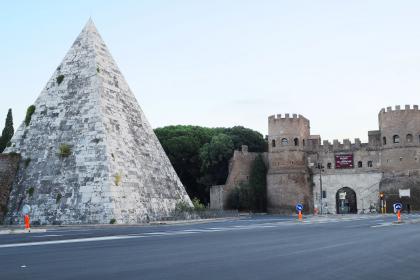
 Condividi
Condividi
Basilika Santa Francesca Romana al Palatino (Santa Maria Nova)
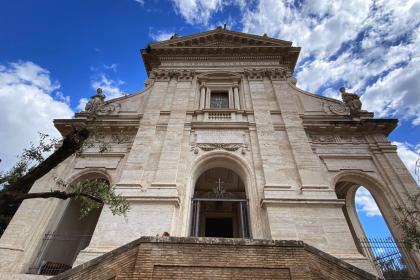
 Condividi
Condividi
Rome's obelisks
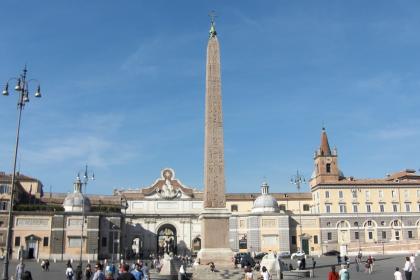
Oblatenkloster der Heiligen Francesca Romana in Tor de’ Specchi
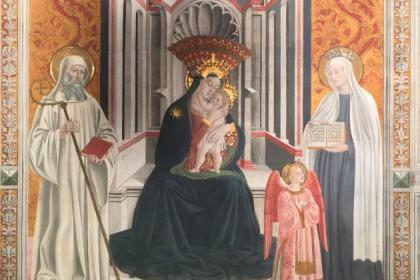
 Condividi
Condividi
Ospitale di Santa Francesca Romana
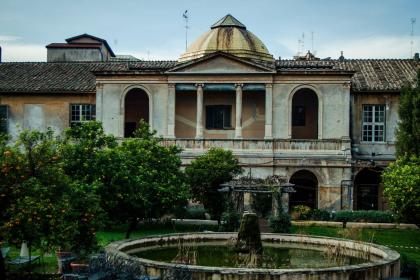
 Condividi
Condividi
Church of the Santissima Trinità dei Pellegrini

 Condividi
Condividi
Kirche San Girolamo della Carità
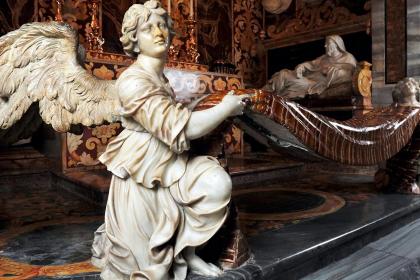
 Condividi
Condividi
Palazzo dei Filippini (Convento and Oratorio dei Filippini)
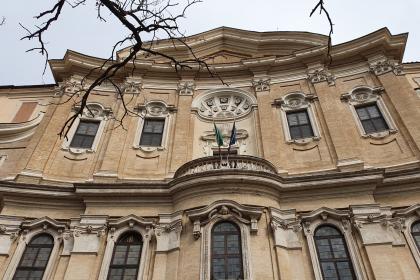
 Condividi
Condividi
Kirche Santa Maria in Vallicella (Chiesa Nuova) und stanze di San Filippo Neri
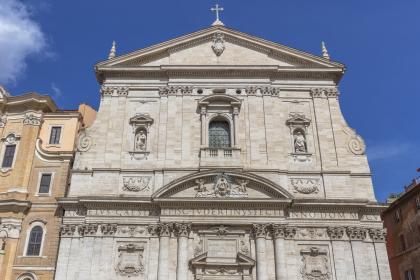
 Condividi
Condividi
Palazzo Massimo alle Colonne (Kapelle von San Filippo Neri)
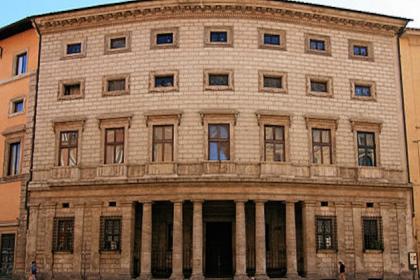
 Condividi
Condividi
Kirche San Giuseppe dei Falegnami al Foro Romano
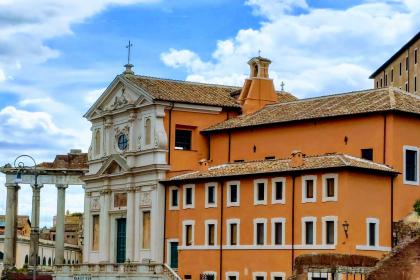
 Condividi
Condividi
Bignè di San Giuseppe

Tullianum-Gefängnis (Carcer Tullianum)
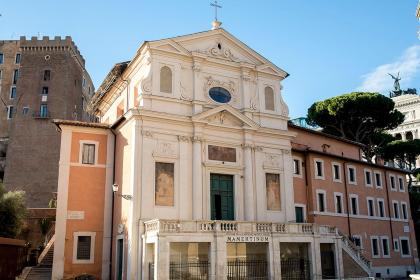
 Condividi
Condividi
Sieben Kirchen für sieben Kunsthandwerke
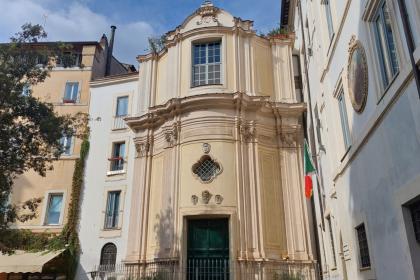
Ein Erbe an Geschichten und Traditionen, das es in den Gildekirchen zu entdecken gilt
Museo Storico della Liberazione di Via Tasso
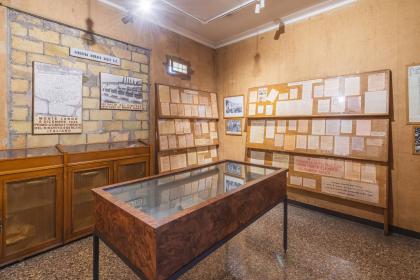
 Condividi
Condividi
Mausoleum des Fosse Ardeatine
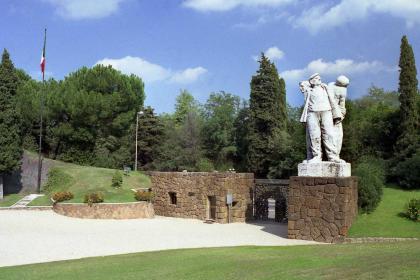
 Condividi
Condividi
Piazza della Minerva
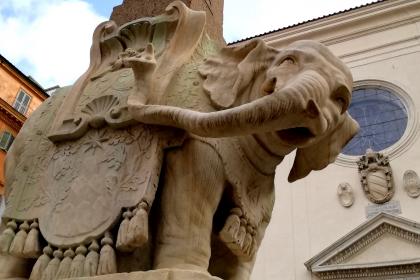
 Condividi
Condividi
Basilika Santa Maria sopra Minerva
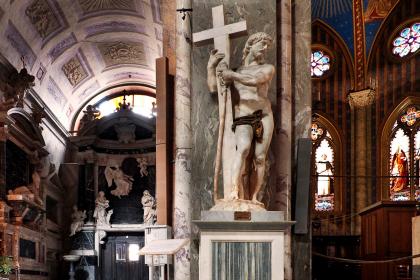
 Condividi
Condividi











































